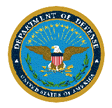
of Problem
Review
Results
In response to the event, an extensive, timely, and exhaustive public affairs campaign was actively employed for seven months. A massive media campaign was launched to respond to the public. From the time the event occurred to the day the service members were sentenced seven months later, the Marine Corps public affairs office in Okinawa, Japan frantically attempted to deal with the massive media event. During that period, 23 news releases regarding the topic were prepared and disseminated to over 64 major media outlets, approximately 25 television, 30 newspaper and magazine, and five radio organizations. Media representatives included correspondents from Australia, Japan, England, the United States, France, Italy, and Sweden. The Marine Corps public affairs office responded to over 800 media queries, escorted 357 media representatives, and provided 233 interviews to correspondents.
Public affairs representatives did what they believed was correct by providing informative facts and persuasive material to their audience via many media channels, predominantly radio, television and newspapers. Many of the messages the command attempted to convey to the public included strategic themes, such as displaying a demonstration of grief, issuing a statement of action, and ensuring the public that the military’s legal, police, and public affairs representatives were fully cooperating with local officials.
Unfortunately, the office never evaluated the effectiveness of their campaign on the public. They never assessed how much of their strategic command messages were reaching the audience. They simply did what they believed was correct by offering information and access to facilities and personnel to the media. The office was not aware of the effects different mediums had on conveying their messages, and subsequently, how much information about a strategic message the public retained.
Evaluating a military public affairs campaign either during or after a significant event can assist officials to redirect their efforts through the most effective media channel. If the issues surrounding a crisis are complex in nature, one media channel may more completely and accurately pass on the strategic messages a command wants its public to recall.
An analysis of the messages remembered by a target audience may disclose findings that suggest the tactics of a campaign should change. For example, an analysis of the Okinawa rape case may find that the target audience remembered more about the strategic messages the command attempted to communicate through a newspaper medium. In contrast, evaluations may discover that the messages transmitted through television mediums were actually damaging to the military because reporters did not convey any command messages. Consequently, the Okinawa campaign may have been partially unsuccessful because an almost equal amount of attention was given to television outlets as newspaper organizations. This evaluation can be made during almost any campaign, however, an analysis such as this paper proposes rarely occurs.
This paper constructs a framework that military public affairs representatives can use during or after a communication event to evaluate the effectiveness of their campaign. For the purpose of this work, the effectiveness of a campaign is operationally defined here as the amount of information about a strategic public affairs message that is retained by the target audience. Before examining the specific design of this study, it is important to establish a theoretical framework to guide this analysis.